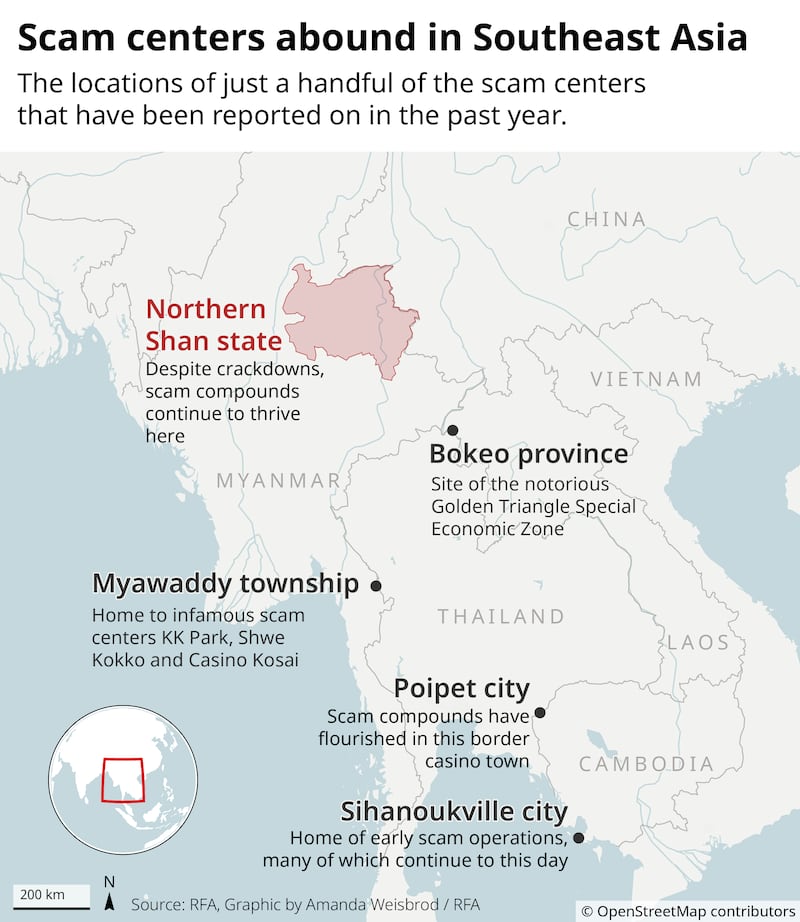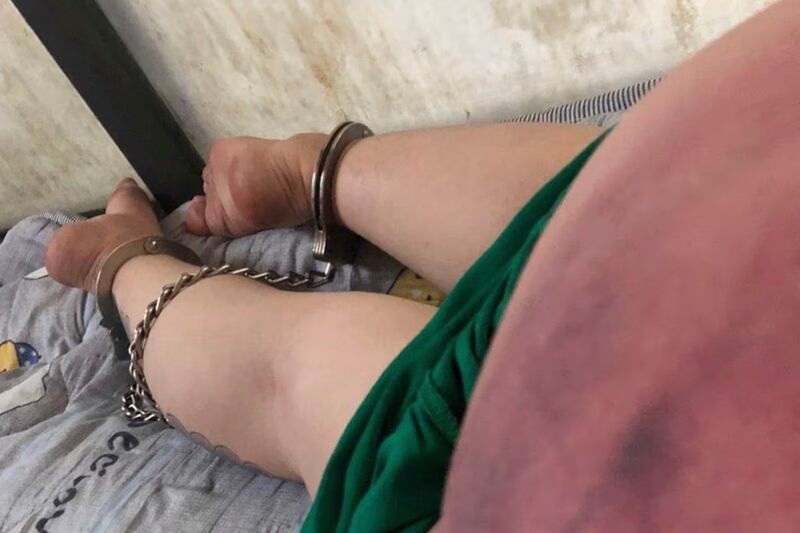Updated June 27, 2025, 2:30 p.m. ET
Cyber scam compounds made international headlines in January after a Chinese actor was rescued from Myanmar’s notorious KK Park. In late December, Wang Xing flew to Mae Sot, Thailand on the promise of an acting gig. Instead, he was kidnapped and hustled across the border into a compound where victims like him are forced to trick others out of their savings. If they fail to do so, they are often violently punished.
What is extraordinary about Wang’s case is not the fake job ad, the kidnapping or the cross-border smuggling into a compound filled with thousands of victims from around the world. Rather, it is his rescue that is unusual.
Across the region, hundreds of thousands of people are locked away in similar circumstances. Cambodia, Laos and Myanmar have all seen a massive proliferation of scam compounds in recent years. Run by a range of organized crime groups, the compounds are often linked to powerful local individuals and operate with impunity.
Where did scam compounds come from?
More than a decade ago, cheap internet made Cambodia an early hotspot for Chinese and Taiwanese phone scammers. Pretending to be officials from the government, insurance companies or other businesses, scammers used Voice over Internet Protocol, or VoIP, to call victims in their home countries — most frequently China — and trick them or threaten them into transferring money out of their bank accounts. Early scam operations run out of Cambodia, Kenya, Malaysia and elsewhere bankrupted countless individuals and netted billions of yuan.

While thousands of people have been arrested and deported over the years, those early operations were never fully stamped out and instead proliferated and grew more sophisticated and broad-reaching.
In Cambodia, a 2019 ban on online gambling followed by a mass exodus of Chinese expats and tourists during the pandemic saw casinos increasingly repurposed as scam centers. Special Economic Zones created in Laos and other countries to foster new businesses became hubs of criminality due to lax regulations. In Myanmar, meanwhile, the coup and resulting civil war expanded business opportunities for would-be criminals while lessening the likelihood of enforcement.
Couple the endemic corruption with a global pool of relatively educated but desperately poor job seekers and you get the makings of an unprecedented criminal opportunity. Estimates of money stolen by criminal groups operating out of lower Mekong nations now range from $18 billion a year to upwards of $40 billion.
RELATED STORIES
How a scam ring opened shop in downtown Yangon
Escaping from scam center on Cambodia’s Bokor Mountain
‘Thousands’ of trafficked people held at scam casino site amid escalating violence
Myanmar arrests 45 alleged scam operators in Shan state, but gangs persist
How do the scams work?
Tricking victims into believing their accounts have been compromised remains a common scam in much of the world. But compounds in Southeast Asia have heavily focused on pig butchering in recent years. A loose translation of sha zhu pan (杀猪盘), pig butchering refers to the process of fattening up a victim before sending them to the slaughter.
If these scams take more time and energy, they also appear to net higher gains. After messaging millions of people — often with innocuous messages that are written off as simply a wrong number — scammers then focus their energies on the few who reply, slowly building up a friendship or romantic relationship.
Over time, victims are convinced to invest in crypto or other business opportunities, with small returns often shared back to them. Having seen this “proof” of their loved one’s business prowess, the victim is then convinced to make a much more significant “investment.” In this way, victims routinely lose thousands, hundreds of thousands or even millions of dollars.

Who are the scammers?
But the victims often include the scammers themselves.
While it is clear that some scammers are willingly employed, drawn by the promise of large salaries in countries where poverty is rife, many compounds continue to rely on large pools of trafficked labor. As in Wang’s case, victims are often lured with the promise of a well-paid job that draws on the language and computer skills many of the region’s underemployed youth hold.
Reports from former scammers suggest some who are successful in defrauding victims stand to make good money and not all are employed forcibly. But far more reports have emerged of scammers being tied to their phones through stark violence. Beatings, electroshock, withholding of meals and other forms of abuse and torture appear common at such compounds, with escapees often sharing devastating stories.

Those operating the scam compounds also earn money in more straightforward ways, such as ransoming kidnapped victims back to their friends and family. A Taiwanese fire dancer who was kidnapped in Thailand and brought to a scam park last month was forcibly trained as a scammer and told he would be freed only if his family paid $30,000. While he was released after a joint operation between Taiwanese and Thai police, many of those who make it out of compounds do so only after their families have paid up.
It is exceedingly difficult to know how many people are being held against their will in such centers, but estimates are in the hundreds of thousands, with the U.N. suggesting upwards of 100,000 people have been trafficked into Cambodia and another 120,000 in Myanmar. While operators are generally understood to be tied to Chinese crime groups, trafficked workers come from across the globe. In recent years, China, Taiwan, Hong Kong, Japan, Nepal, Kenya, India, Indonesia, Pakistan, Uganda, Kenya and more have rescued citizens or seen them escape from compounds in Myanmar, Laos and Cambodia.
Edited by Jim Snyder.
